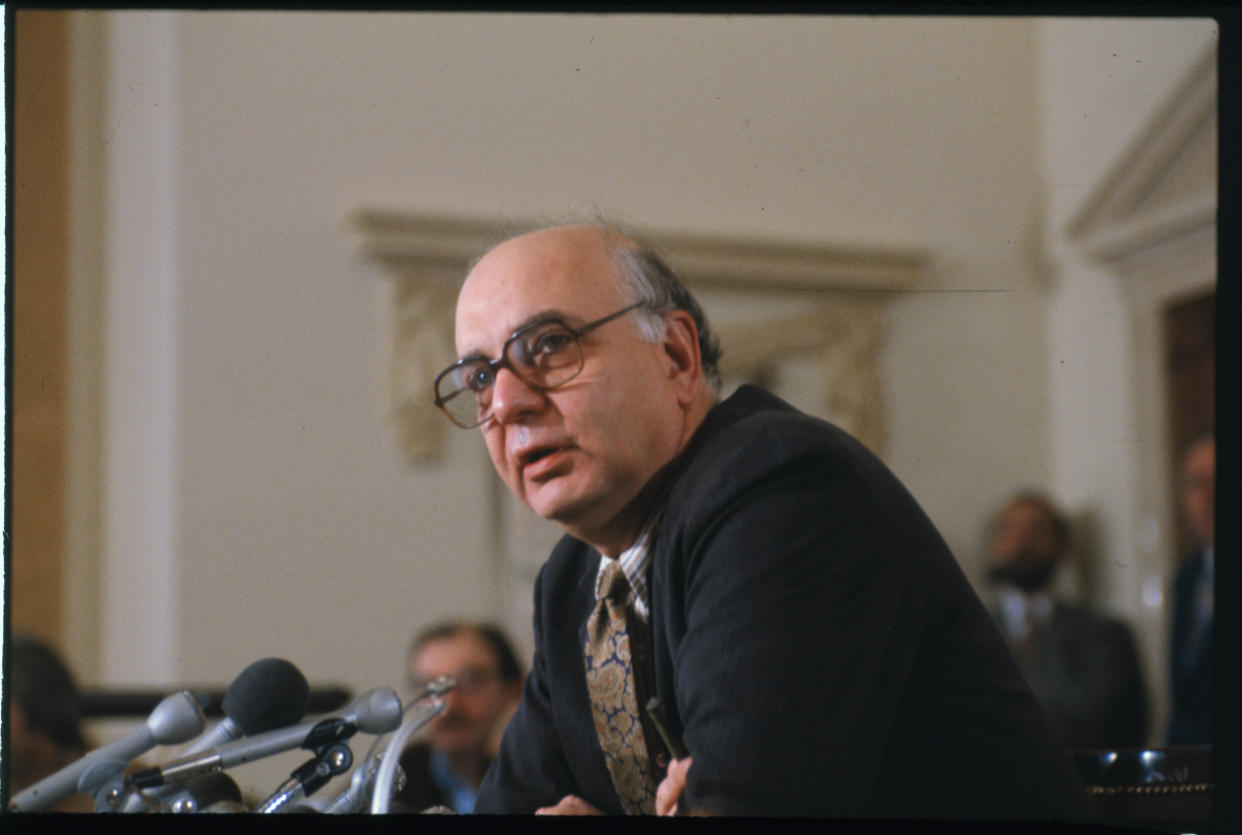When inflation was even worse
The headlines about inflation in 2022 report that we have the biggest jump in prices since the early 1980s. So what exactly was going on back then?
I dug out inflation data from the last great run-up in prices, in the 1970s and early 1980s, to see what was similar to what we’re experiencing now, and what was different. The inflationary slog of the 1970s was the worst bout of price hikes in modern times. It began in the 1960s, with a flood of government spending on the new Great Society programs and the Vietnam war under President Lyndon Johnson. Federal Reserve policy under President Nixon in the 1970s was too loose for too long, adding to inflationary pressures. Then came a series of energy shocks that made a bad situation worse.
The highest level of inflation since World War II came in March 1980, when the annual increase in the consumer price index was 14.8%. Inflation is high now, at 8.5%, but far from those record readings. The last time it was that high was in December 1981, when inflation was finally on its way down, for good. But that was after a prolonged period of consumer pain that coincided with three recessions and drove President Jimmy Carter from office after one term.
Then, as now, the biggest price hikes involved energy. In fact, energy inflation 42 years ago was worse than it is now. The 12-month increase in gas prices in 1982 was 68%. Today, it’s a mere 48%. The cost of household energy for heat and electricity was up 27% in 1980, compared with 15% today. Russia’s barbaric invasion of Ukraine, and the subsequent sanctions on the Russian economy, have contributed to energy inflation today. But there’s nothing new about energy shocks.
In the 1970s, external shocks included the 1973 OPEC oil embargo related to the Yom Kippur war and the 1979 Iranian revolution. Then, in 1980, the eight-year Iran-Iraq war began. From 1970 to 1980, the price of oil more than quintupled. The average pump price jumped from $0.36 per gallon in 1970—$2.74 today—to $1.19 per gallon in 1980, which would be $4.40 today. In 1973, Commerce Secretary Peter Peterson declared, “the era of low-cost energy is almost dead.”
Energy costs, however, may have been more painful 42 years ago than they are now. A typical vehicle in 1980 averaged 16 miles per gallon of gas. Average fuel economy today is about 25.7 MPG. A typical driver logging 12,000 miles at $4.40 per gallon would spend about $3,300 in 1980, in today’s dollars. If gas cost the same today, in real dollars, the same driver would pay $2,054. Efficiency improvements alone would save $1,246 per year, everything else being the same.
[Follow Rick Newman on Twitter, sign up for his newsletter or send in your thoughts.]
There are a couple of big differences between then and now. Another huge source of inflation these days is new and used cars, though those price hikes have started to moderate. That’s largely due to a shortage of microprocessors resulting from one-time distortions relating to the COVID pandemic. In 1980, the cost of new vehicles rose by far less than the overall inflation rate, and there was no increase at all in the cost of used vehicles. That compares with double-digit increases in the cost of both so far in 2022.

We’ve also seen bigger increases in the cost of food, furniture and appliances than in 1980. Again, that is probably because of supply-chain disruptions relating to COVID. Back then, the cost of housing and rent was rising faster than it is now, mostly because interest rates were spiking.
Inflation began to fall fast in the early 1980s, as new Federal Reserve Chairman Paul Volcker began an aggressive series of interest-rate hikes. The Fed this year has finally started hiking rates, hoping, once again, to tame inflation. As Fed officials surely know, however, Volcker’s rate hikes caused another recession that began in 1981. Prosperity finally returned a few years later, but that long bout of inflation punished consumers and politicians, both, in ways nobody would want to repeat today.
Rick Newman is the author of four books, including "Rebounders: How Winners Pivot from Setback to Success.” Follow him on Twitter: @rickjnewman. You can also send confidential tips.
Follow Yahoo Finance on Twitter, Instagram, YouTube, Facebook, Flipboard, and LinkedIn
